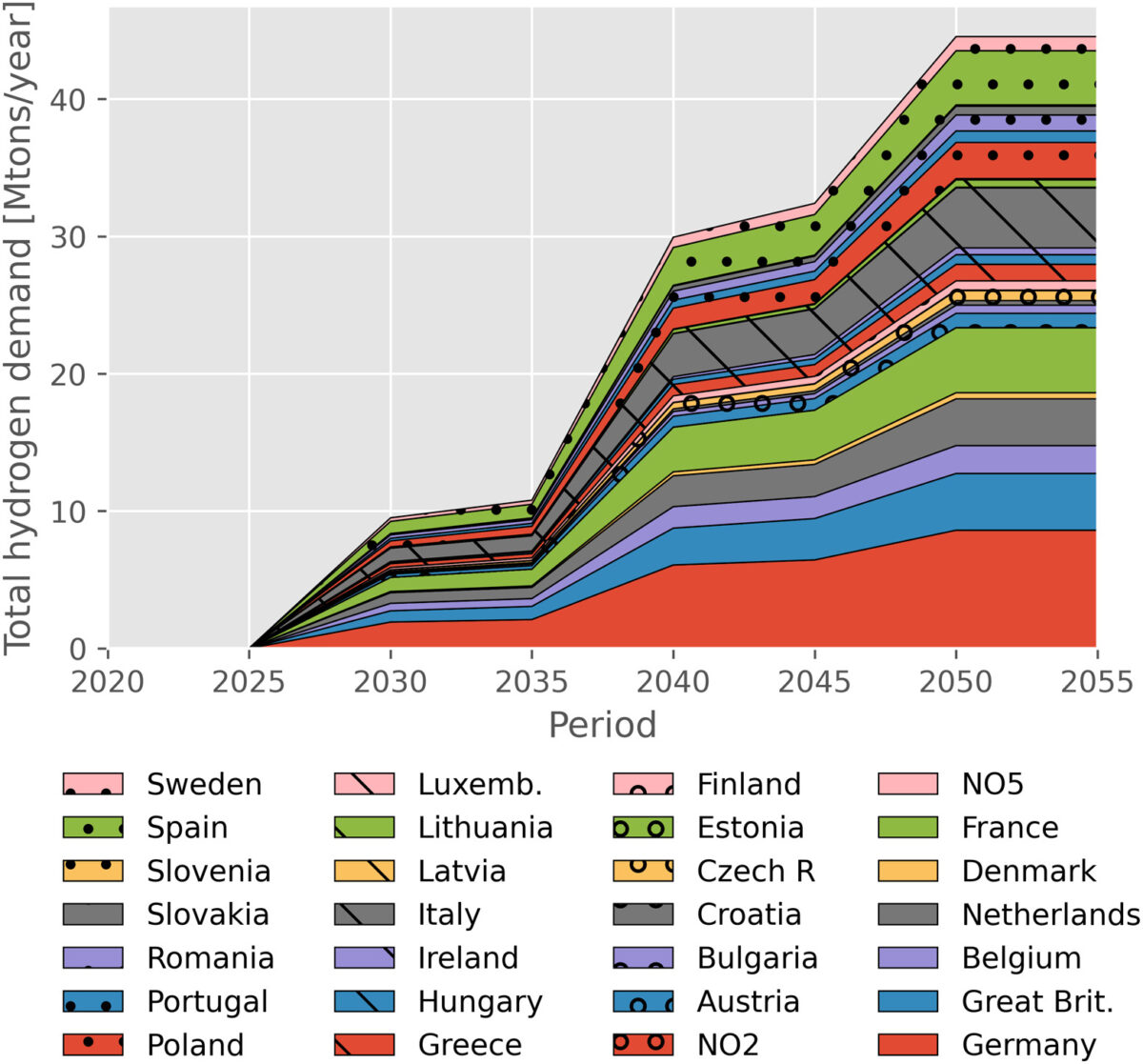Norwegian University of Science and Technology researchers have determined that blue hydrogen can yield significant savings in the European power market by the 2030s. But their study shows that an early deployment of green hydrogen could lead to higher hydrogen costs and CO2 emissions. If natural gas prices mirror those of the 2022 energy crisis, green hydrogen will become the primary source by 2030 and 2050, causing a substantial price increase.
Aalto University researchers have led a team to show the potential of introducing hydrogen as an energy carrier in Finland. The study indicates that this transition would result in a substantial reduction of CO2 emissions by 71.5% and fossil energy consumption by 72.6%, alongside a notable increase in electricity consumption by 31.9%. Their analysis says that the incorporation of 19.98 TWh of hydrogen in the industry and transport sectors could notably reduce fossil fuel utilization from 78.92 to 21.60 TWh/a, as well as CO2 emissions from 22.91 to 6.54 MtCO2/a in Finland by 2040. To accommodate the heightened electricity demand, a significant expansion of renewable generation becomes essential. The researchers also emphasize the advantages of flexible hydrogen production, which helps mitigate renewable curtailment and enhances energy efficiency. However, they note that such flexibility requires hydrogen storage, which is currently economically unfeasible.
Nikola says that its has recorded more than 200 sales orders for the Class 8 Nikola hydrogen fuel cell electric vehicles, with a majority of the agreements established directly between fleets and dealers. The company, headquartered in Phoenix, said that the sales comprise 202 orders for the purpose-built heavy-duty trucks, serving 18 different end customers. The production of these trucks has commenced at the Nikola Coolidge manufacturing facility in Arizona, with deliveries anticipated to commence later this year. Notably, Nikola has also secured an additional $16.3 million in funding for the development of seven open-network hydrogen refueling stations across the United States.
Popular content
Solvay Peróxidos de Los Andes has inaugurated a hydrogen peroxide (H2O2) production plant in the city of Coronel, located in the Biobío region of Chile. The plant, designed to operate for a minimum of 30 years, will initially have a production capacity of 23 thousand tons per year during its first phase.#
H2i Technology has produced its initial batch of 10 commercially viable hydrogen injection kits in Victoria. These kits will be employed for field testing with prospective clients over the upcoming six months. The Australian company said that its hydrogen enhancement system involves specialized hardware and proprietary software for managing hydrogen injection into diesel engines, leading to substantial emission reduction and fuel cost savings. The final testing and calibrations are projected to conclude within 2-4 weeks.
This content is protected by copyright and may not be reused. If you want to cooperate with us and would like to reuse some of our content, please contact: editors@pv-magazine.com.


1 comment
By submitting this form you agree to pv magazine using your data for the purposes of publishing your comment.
Your personal data will only be disclosed or otherwise transmitted to third parties for the purposes of spam filtering or if this is necessary for technical maintenance of the website. Any other transfer to third parties will not take place unless this is justified on the basis of applicable data protection regulations or if pv magazine is legally obliged to do so.
You may revoke this consent at any time with effect for the future, in which case your personal data will be deleted immediately. Otherwise, your data will be deleted if pv magazine has processed your request or the purpose of data storage is fulfilled.
Further information on data privacy can be found in our Data Protection Policy.